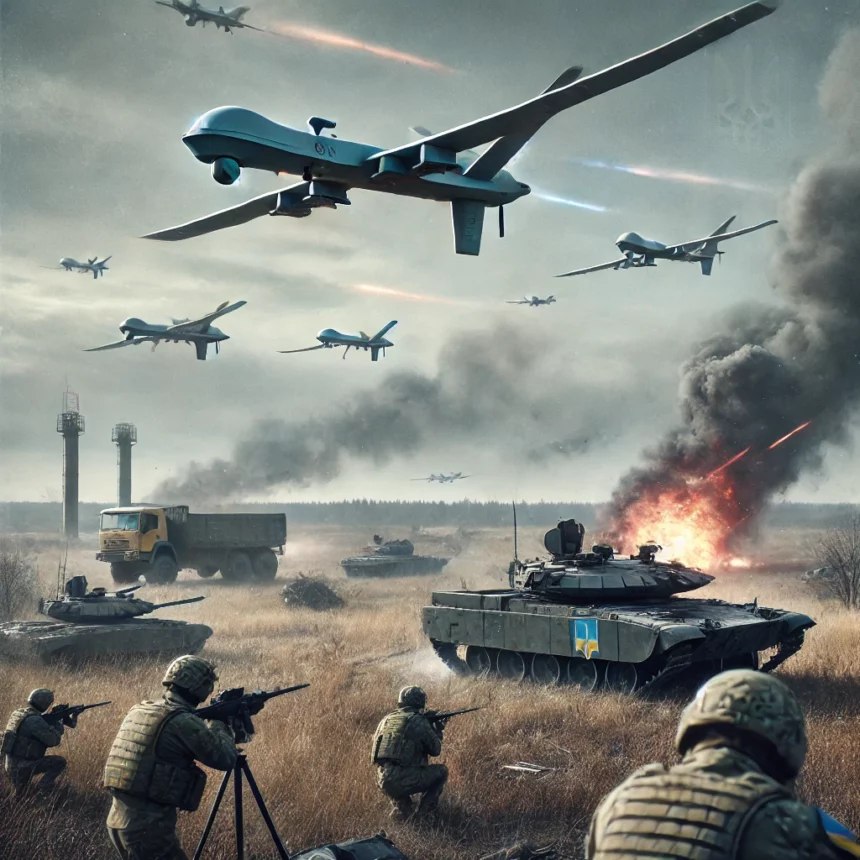Summary by Geopolist | Istanbul Center for Geopolitics:
The paper details how the Ukrainian defence of Pokrovsk has significantly changed the dynamics of the fighting in Eastern Ukraine. Initially, Russian forces intended to launch a direct offensive to capture Pokrovsk, using what they regarded as Ukraine’s vulnerabilities, particularly during a time when U.S. support for Ukraine was halted in late 2023. Nevertheless, they encountered significant opposition from the Ukrainian military, which incorporated advanced drone tactics into their ground operations. This opposition has forced the Russian forces to change their original strategy of a frontal assault and instead adopt an encircling manoeuvre via Selydove.
The Ukrainian defense, strengthened by very successful drone operations, played a crucial role in limiting Russian mechanized capabilities. These drones caused considerable casualties among Russian soldiers, especially during their efforts to achieve mechanized progress. The capacity of Ukraine to inflict significant damage has impeded Russian progress, thereby underscoring the operational constraints of Russian forces.
To accomplish their goals in Pokrovsk, Russian forces needed to modify their strategies, including attempting to stabilize the lines west of Kurakhove and attacking from less critical directions. Nonetheless, these manoeuvres have incurred substantial costs to Russian personnel and resources, especially as Ukrainian defences and counteroffensive activities persistently target and thwart their operations. Ukrainian forces, although encountering problems including personnel limitations, have adeptly utilized drones and artillery to establish an asymmetric edge on the battlefield.
The memo elaborates that Russian soldiers have been encountering difficulties in distinguishing between tactical and operational advantages. Recent advancements near Selydove and Vuhledar, albeit technically proficient, have not yet resulted in substantial operational successes. The Russian military has had to allocate substantial resources to these manoeuvres, diverting attention from their core goal of decisively capturing Pokrovsk.
The incident exemplifies a larger issue for Russia in its pursuit of securing the entirety of the Donetsk and Luhansk oblasts. Russian forces are conducting operations in various regions, including Siversk, Chasiv Yar, and Toretsk, as part of their offensive campaign. The plan has entailed prolonged offensive operations, however has yielded minimal operational success. The advancement is gradual and exceedingly expensive, leading to persistent attrition instead of significant improvements.
Theory of victory proposed by Russian President Vladimir Putin, characterized as “creeping advances,” appears to depend on the slow depletion of Ukrainian defences. Nonetheless, the ability of Ukrainian troops to impede these advancements—through the utilization of drones and the strategic exploitation of topography and defensive positions—persistently undermines the Russian strategy. Estimates suggest that Russia’s present personnel losses are unsustainable in light of its recruitment rates, and that it is having difficulty meeting the attritional needs of its strategy.
The Ukrainian drone capabilities, both aerial and maritime, have been pivotal in limiting Russian progress and causing substantial losses to Russian armoured forces. These drones have impeded Russian mechanized movements, compelling infantry to advance on foot and hindering Russia’s ability to sustain momentum in their offensive operations. The efficacy of Russia’s mechanized forces has markedly diminished as Ukrainian drones assume a prominent role.
it also indicates that Ukraine’s tactic of compelling Russia to undertake expensive, inefficient manoeuvres while postponing significant gains has not only safeguarded critical defensive positions but also hindered Russian forces from making considerable progress in Donetsk Oblast. Ukraine’s capacity to maintain this defensive stance and persist in causing casualties to Russian soldiers is significantly contingent upon prompt and adequate Western assistance. Previous delays in Western assistance undermined Ukrainian defences, and analogous setbacks could encourage Russian offensives.
Read more below.







